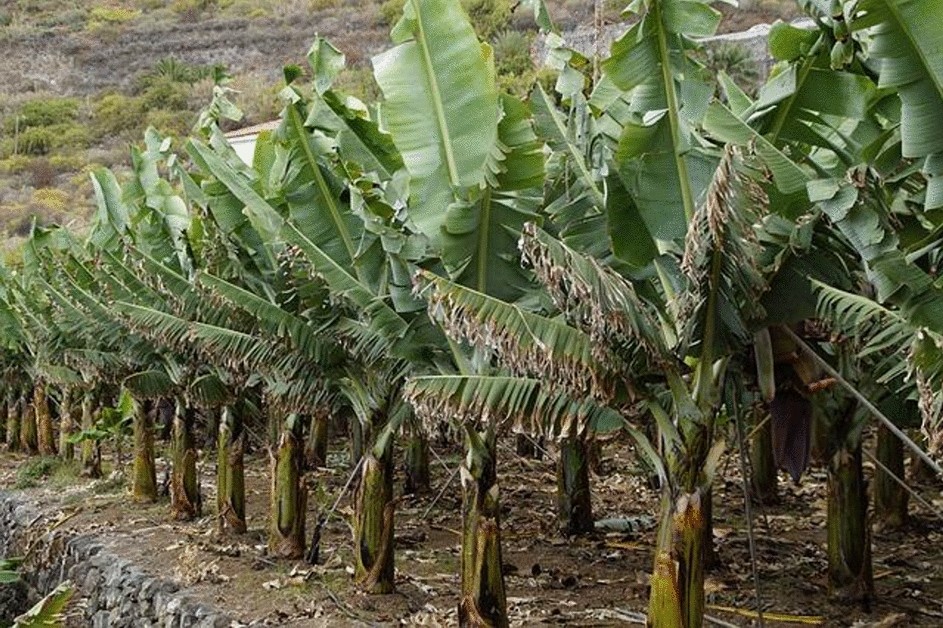- هذا الموضوع فارغ.
- الكاتبالمشاركات
- أبريل 7, 2025 الساعة 6:33 ص #622829

Plantains, a staple crop in many tropical regions, thrive in areas with abundant sunlight. Proper spacing between plantain plants is essential for maximizing sunlight capture, which in turn enhances photosynthesis and overall yield.
As plantain farming becomes increasingly important for food security and income generation, optimizing plantain spacing is crucial for improving productivity and sustainability.
This article discusses the importance of optimizing plantain spacing for sunlight capture and the techniques that can be used to ensure optimal plant growth.
1. The Importance of Sunlight for Plantain Growth
Like all photosynthetic plants, plantains require sufficient sunlight to produce food through photosynthesis. Sunlight is absorbed by the leaves, where it is converted into energy for growth, flowering, and fruit production.
If plantains are planted too close together, the canopy can become overcrowded, resulting in shading and reduced sunlight penetration. This can limit photosynthesis and lead to slower growth, reduced fruit production, and lower overall yields.
Ensuring that plantains have access to adequate sunlight is therefore critical for optimizing their growth and maximizing yields.
2. Effects of Improper Plantain Spacing
When plantain plants are spaced too closely, they compete for light, nutrients, and water, leading to stunted growth and diminished yields. Overcrowding can also increase the risk of disease and pest infestations, as dense foliage creates a favorable environment for fungal and bacterial growth.
Conversely, spacing the plants too far apart can lead to wasted land and inefficient use of available resources, such as water and fertilizers.
Therefore, finding the optimal plantain spacing is crucial to avoid the negative effects of both overcrowding and excessive spacing, ensuring that each plant receives enough sunlight and resources to grow effectively.
3. Determining Optimal Plantain Spacing for Sunlight Capture
The optimal spacing for plantain plants depends on several factors, including the variety of plantain, local climate conditions, and soil fertility.
However, general guidelines suggest that a spacing of 2.5 to 3 meters between plants in rows, and 2.5 to 3 meters between rows, is ideal for maximizing sunlight capture. This allows each plant sufficient space to develop a healthy canopy and ensures that sunlight can reach the lower leaves.
The spacing also promotes good air circulation, reducing the risk of disease and improving overall plant health. In areas with less sunlight, or during the early stages of plant growth, closer spacing may be used to increase plant density and maximize light absorption.
4. Incorporating Agroforestry Practices to Enhance Sunlight Capture
Agroforestry, the practice of integrating trees and crops in a mutually beneficial system, can also help optimize sunlight capture for plantains.
By planting complementary crops or trees that provide partial shade during the hottest part of the day, farmers can reduce the risk of sunburn and heat stress, while still ensuring that the plantains receive enough sunlight for healthy growth.
For instance, nitrogen-fixing trees such as Leucaena or Gliricidia can be planted alongside plantains to improve soil fertility and offer some shade, especially during dry spells or intense sunlight. Agroforestry systems can thus enhance both plantain productivity and ecological sustainability by promoting balanced sunlight exposure.
5. Climate and Soil Considerations for Spacing Optimization
Optimal plantain spacing is also influenced by local climate and soil conditions. In areas with high rainfall and abundant sunlight, wider spacing may be necessary to allow for good air circulation and prevent excess humidity, which could lead to fungal diseases.
Conversely, in areas with low rainfall or less intense sunlight, narrower spacing might be appropriate to maximize plant density and light capture.
Soil fertility is another important factor; in rich, well-drained soils, plantains can be spaced slightly closer together, as they will have better access to nutrients and water. Soil tests and climate considerations should therefore guide spacing decisions to ensure that plantains receive the ideal conditions for growth.
In conclusion, optimizing plantain spacing for sunlight capture is crucial for improving plantain yield and overall farm productivity. Proper spacing ensures that each plant has access to sufficient sunlight for photosynthesis, which is essential for healthy growth and fruit production.
By considering factors such as plant variety, local climate, soil conditions, and agroforestry practices, farmers can determine the optimal spacing for their plantain crops. With careful management of plant spacing, farmers can increase their harvests, reduce the risk of diseases, and ensure the sustainable growth of this important crop.
Ultimately, optimizing plantain spacing contributes not only to improved yields but also to the long-term sustainability of plantain farming in tropical regions.
- الكاتبالمشاركات
- يجب تسجيل الدخول للرد على هذا الموضوع.

